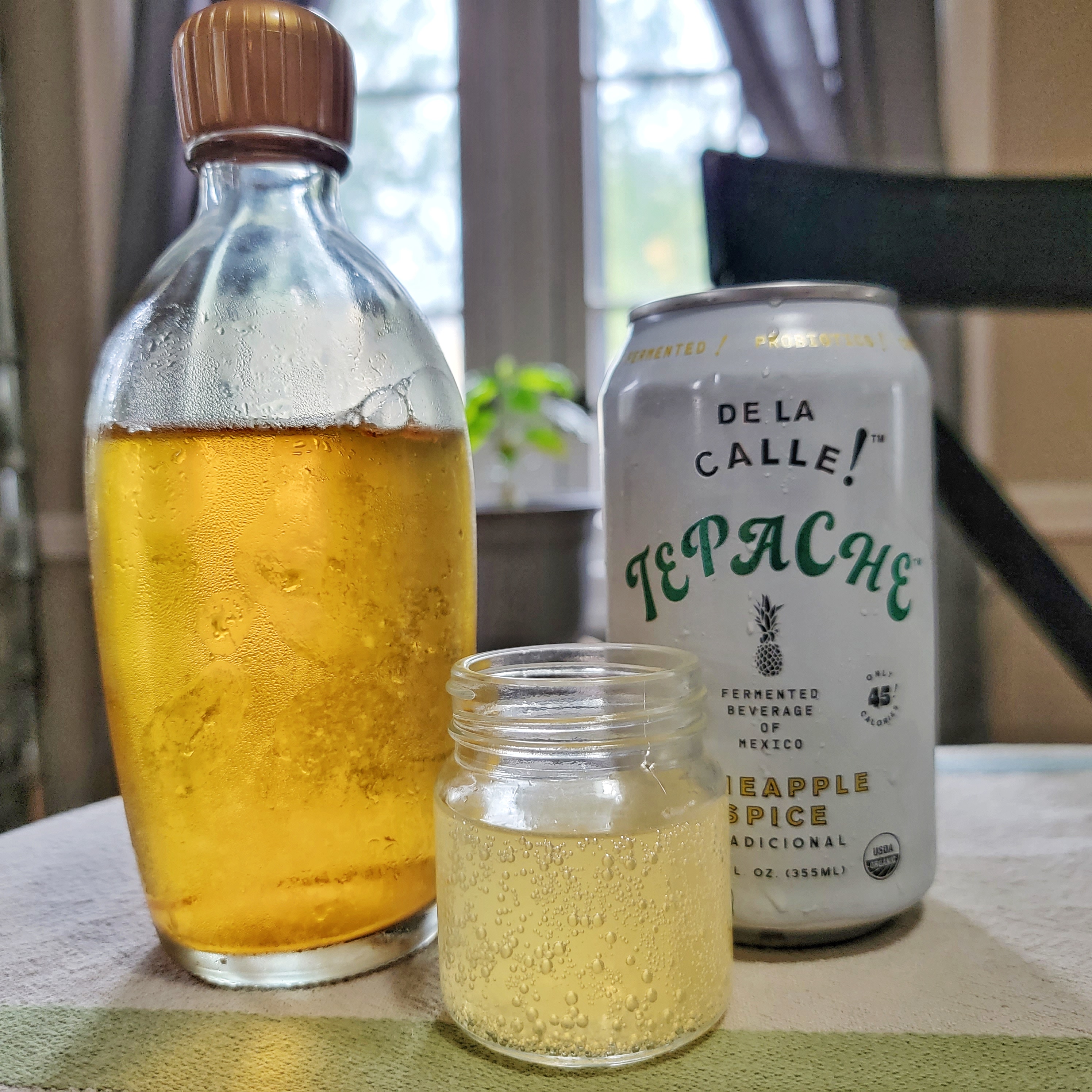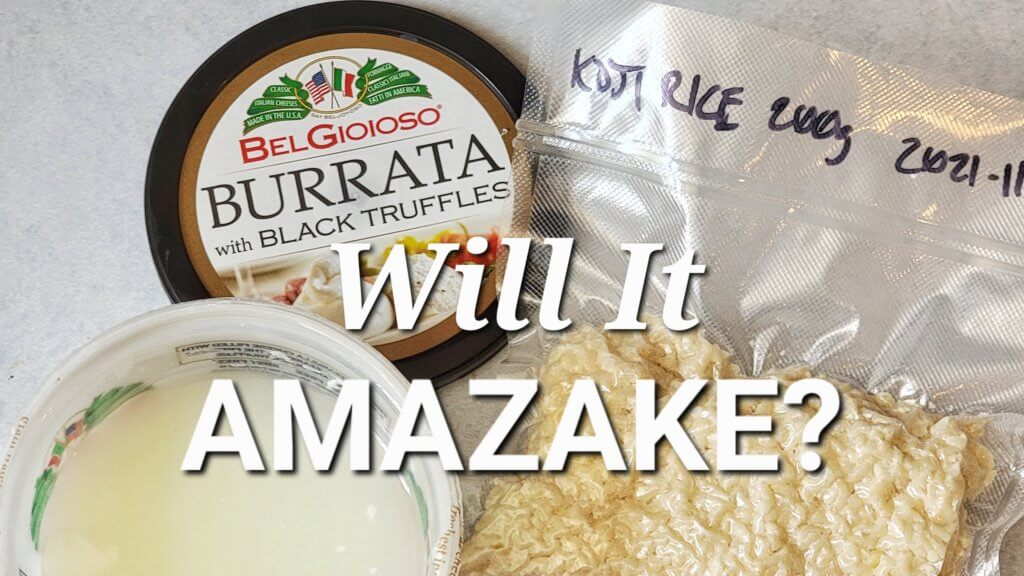Shio Koji Ketchup

It’s finally that time of year when I have an abundance of tomatoes in the garden. While I thoroughly enjoy preparing a mouth-watering caprese salad, snacking on the cherry tomatoes, and making fresh sauce, I had quite a lot of tomatoes. And while it occurred to me to make and “can” sauce, there was a recent fiasco on Twitter where Cathy Barrow pointed out that a NY Times recipe for jarred tomato sauce was “botulism stew”:
There was even a correction issued days later attempting to alter the recipe and add lemon juice to increase the pH, but this is generally not enough to safely jar the specific sauce with extra vegetables they made without pressure canning, for which I do not own the proper equipment.
And so, I do not intend to get into publishing recipes for long-term jar storage just yet. But I will totally publish things about letting wild bacteria run rampant in food you’re going to eat!
In all seriousness, there are only a few easy rules of thumb that make lactofermentation generally safe:
- Cleanliness
- Proper salt concentration
- Fresh, quality ingredients
There are, however, some traditional ferments that don’t necessarily fit into that box, such as this traditional Italian tomato conserve recipe sent recently by a fan in the Czech Republic (!). This recipe does not include salt in the primary fermentation phase, and so entirely relies on the naturally-occurring bacteria, yeasts, and molds of the particular local area. These kinds of ferments crop up all across the globe, but keep in mind that these processes were honed over many generations within very specific regional climates and microflora ecosystems, and more often than not do not necessarily “travel” well. In other words, I would not recommend following the above recipe unless you live in Italy!
These days we utilize starter cultures to provide the right starting point for ferments that were developed in other regions, especially when it comes to molds (like koji) because otherwise they are nearly impossible to control for.
Anyways, enough talking about what I’m not doing. Let’s get into what I am doing! The first step: make tomato paste!
Day 1—9/6
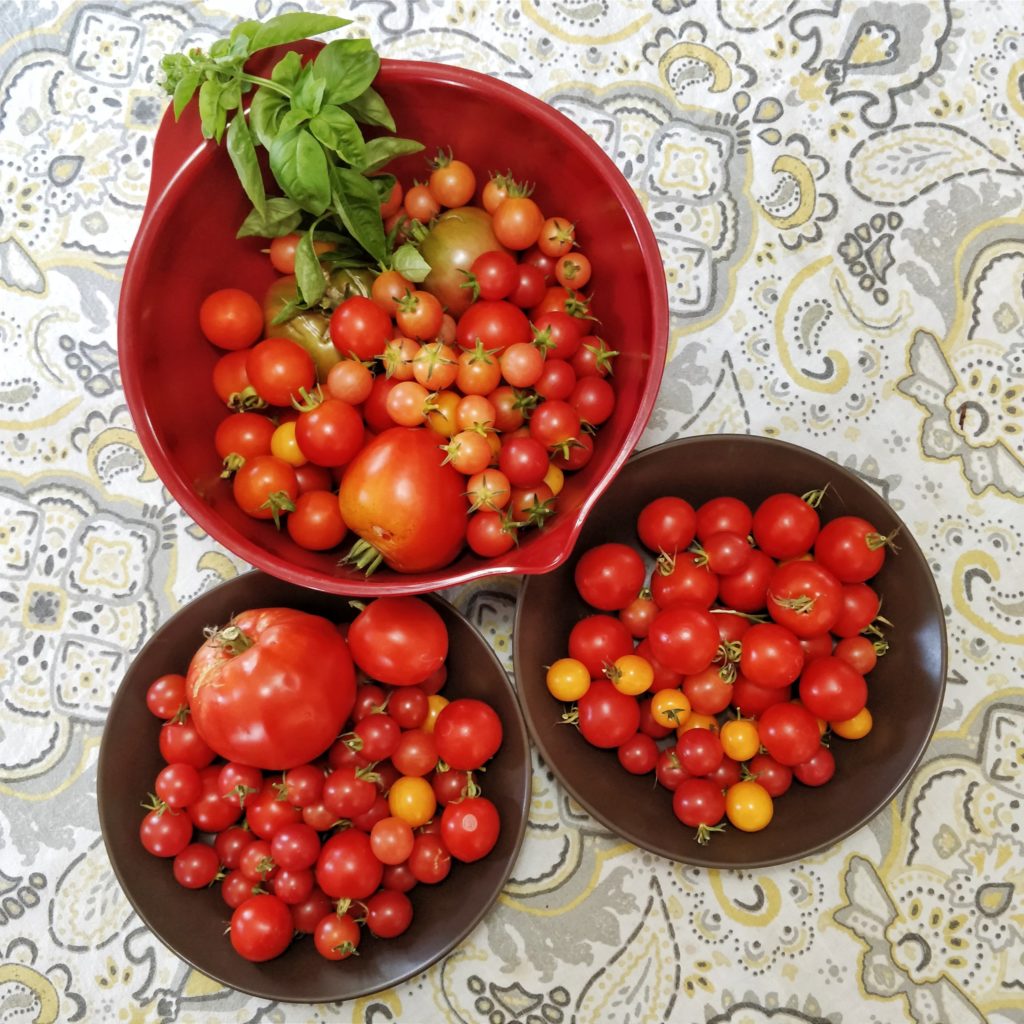
Look at all those beautiful tomatoes! I’m utilizing every variety in my garden, from beefsteak to cherry and everything in-between.*
- 2450g tomatoes (roughly 5.5lbs)
I roughly chopped the tomatoes and stewed them all together for a while (with a stem of basil, because I’ve got a whole lot of that too) just to soften things up so that we can easily separate the skin and seeds.

20 minutes later, everything is soft enough to pour, a bit at a time, into the food mill. After a few minutes of turning the crank, the pulp is separated from the skin and seeds.

I’ve discarded the skin and seeds (I don’t need hundreds of seedlings popping up from the compost) and spread the pulp in a large sheet pan. With the oven set to the lowest temperature, 170°F, I will stir every so often until it’s thick enough to call a paste.
If I would have known this would take 12 entire hours to get to the right consistency, I would have started at a slightly higher temperature and reduced it once it was getting close. Just know that the more surface area you have, the faster this will go, and the last couple hours will be key in making sure nothing burns.

But, after the fateful 12 hours, I was left with 433g of beautiful ruby-red paste, a reduction of over 82%!
At this point, I posted a picture on Instagram and stored the paste in the fridge.
Day 7—9/13
Oops.
I did not mean to leave this in the fridge for a whole week before starting the ferment. But here we are.
Now I need to answer an important question: to vinegar, or not to vinegar? If you search the web for “fermented ketchup”, you’ll see what I mean. Just about every recipe that pops up is a copycat of the previous, essentially boiling down to this basic recipe:
- tomato paste (often canned)
- honey or maple syrup
- raw vinegar
- Worcestershire sauce or fish sauce
- starter brine
- salt & spices
And I’m not talking about a small amount of vinegar to act as a starter culture—most are added at a ratio of about 1:6 vinegar to tomato paste! And then, all of these ingredients are mixed up and stored on the counter for anywhere between 8 hours to 4 days before transferring to the fridge.
Something tells me that most of the flavor of the resulting ketchup from these recipes is being added upfront, and while I’m sure there is some added flavor from the starter brine added, I want to experience the flavors of my hard-earned tomato paste enhanced by natural fermentation, without all that other stuff getting in the way.
I also just generally balk at recipes that provide volumetric measurements for salt*, since we are aiming for a percentage of salt by weight. One tablespoon of Morton kosher salt is not equal to one tablespoon Diamond Crystal kosher salt! In small enough quantities the difference will be small, but this does not scale well and I don’t trust it. If you aren’t following a recipe with exact measurements, how are you supposed to know how much salt to add?
Enough ranting, let’s do this!
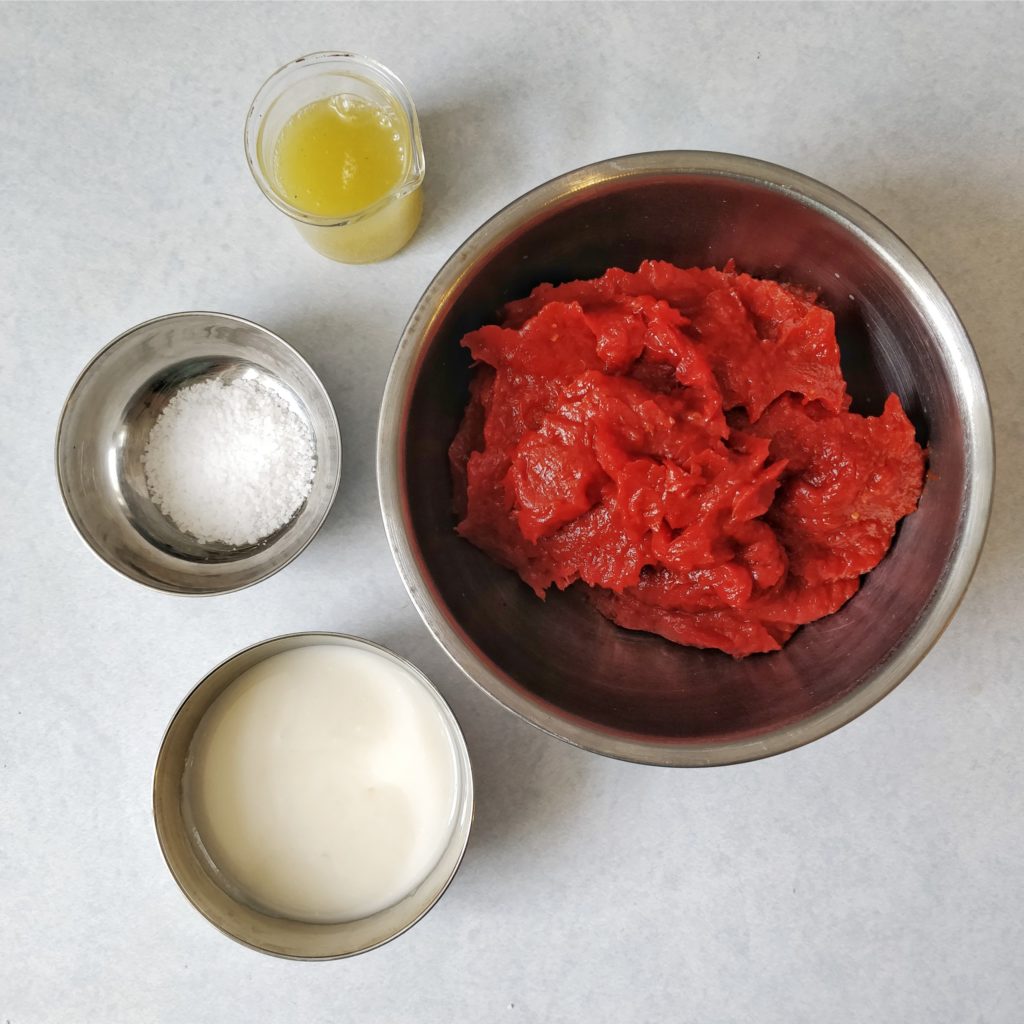
- 433g homemade tomato paste
- 13g salt (3% by weight of paste)
- 30mL (2 Tbsp) starter brine from Green Chili Sauce
- 86g shio koji (20% by weight of paste)
I’ve decided not to use vinegar, but I do need to add something to “water down” the paste a little. I’ve decided to use shio koji, because I’m keen to find out how the koji enzymes affect the flavor. My hypothesis is that any residual starches will be converted to sugars and make it even sweeter, and if any protein is present the natural umami of the tomatoes will be enhanced even further.

This does leave the mixture fairly thick; I’m hoping that the enzymatic breakdown and fermentation will loosen it up, but we’ll just have to see. I may need to add some vinegar after all.
Day 27–10/3
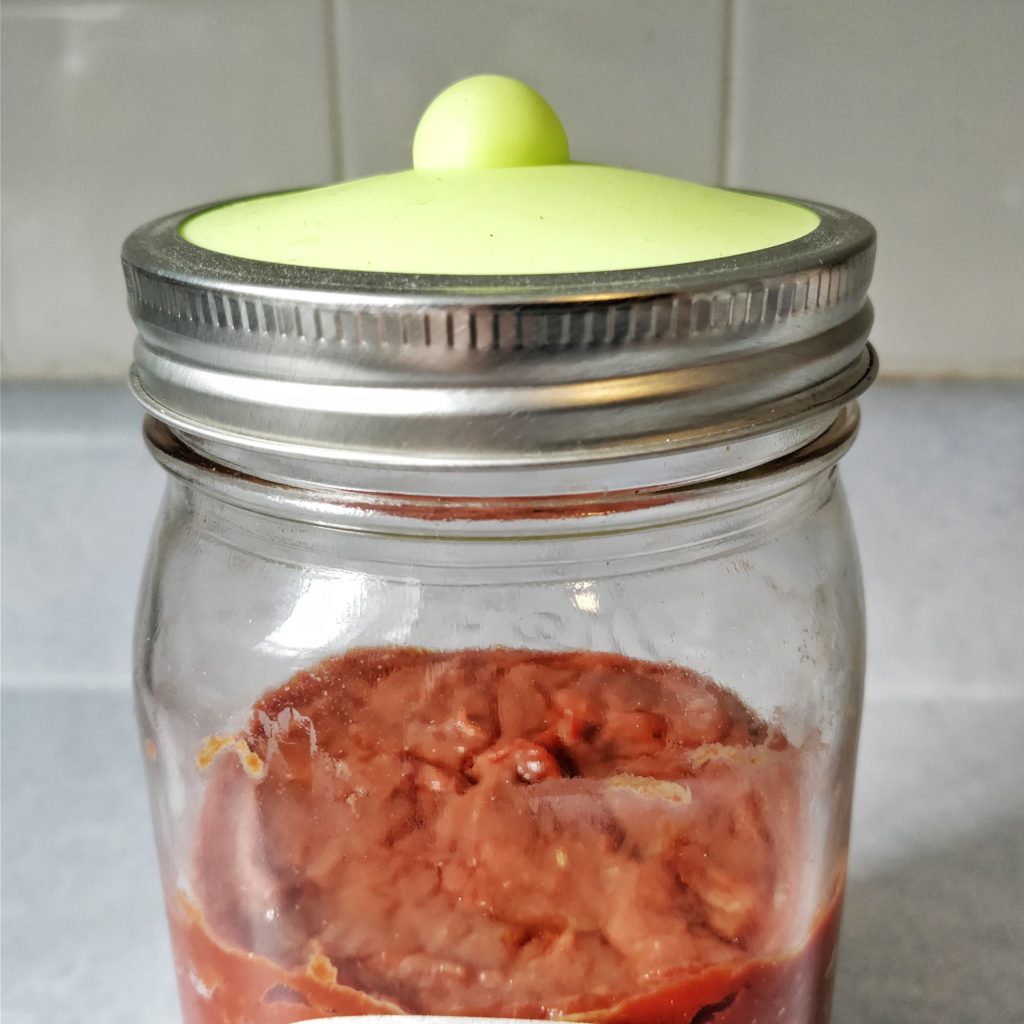
We should really consider this day 20 since the inoculation didn’t happen until 7 days in, but here we are. Fermentation is in full force!
Day 33–10/9

A week later and active fermentation has tapered off. I’ll let it go another week.
Day 41–10/17

I think I’m calling this done? Still pretty thick so I wouldn’t call this “ketchup”.
I was surprised that I was still able to taste the starter brine I used from the green hot sauce, but it’s not unpleasant. I’m not really sure if I’ll use this like ketchup on something like french fries, but I would absolutely slap some on a burger. It’s richness has deepened while retaining its brightness; doesn’t taste overly acidic either. More acidity would have helped it taste more like ketchup, but I’m definitely ok with the tomato “miso” paste I’ve ended up with.
I added an additional 86g of shio koji in an attempt to thin it further, and also to encourage the enzymatic process to continue in the fridge, where this jar is headed. I’m going to call this complete for now, though I may update in a few months with more tasting notes.
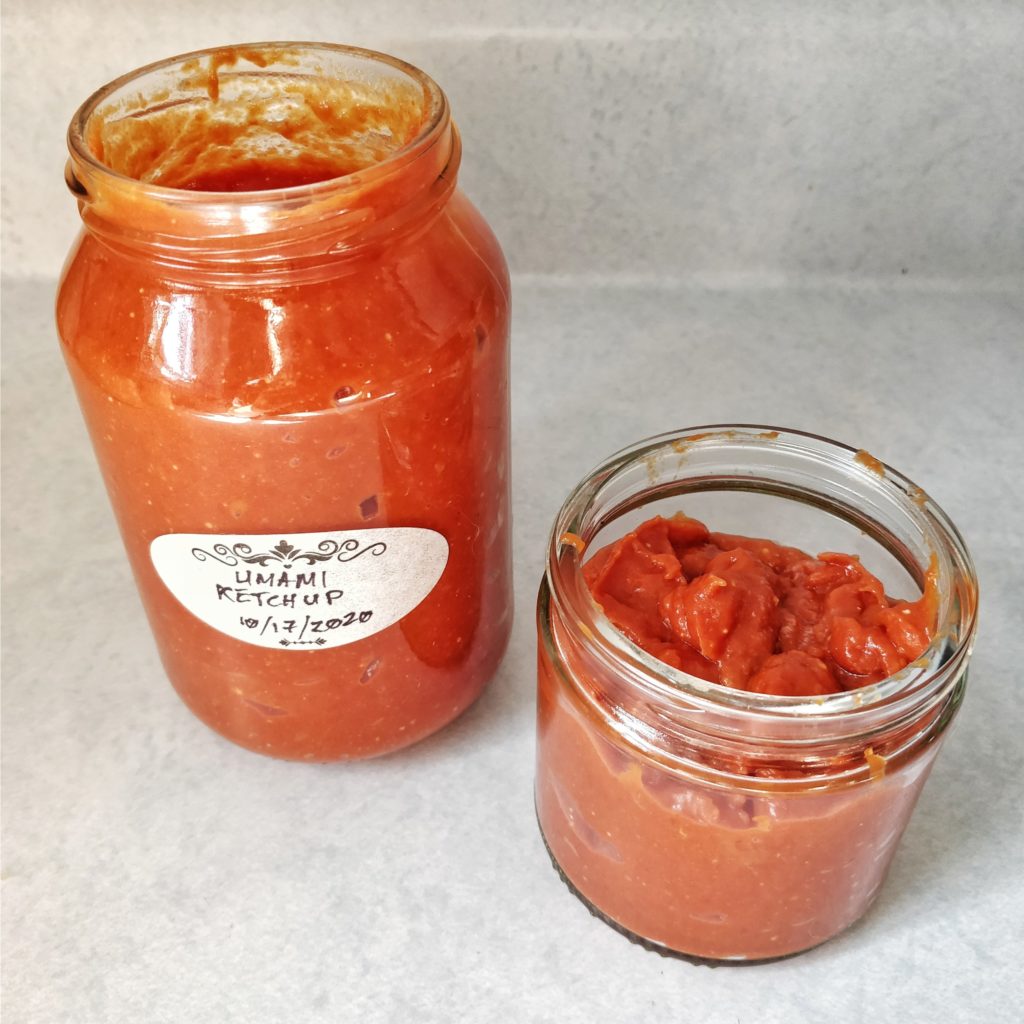
Day 115–12/30
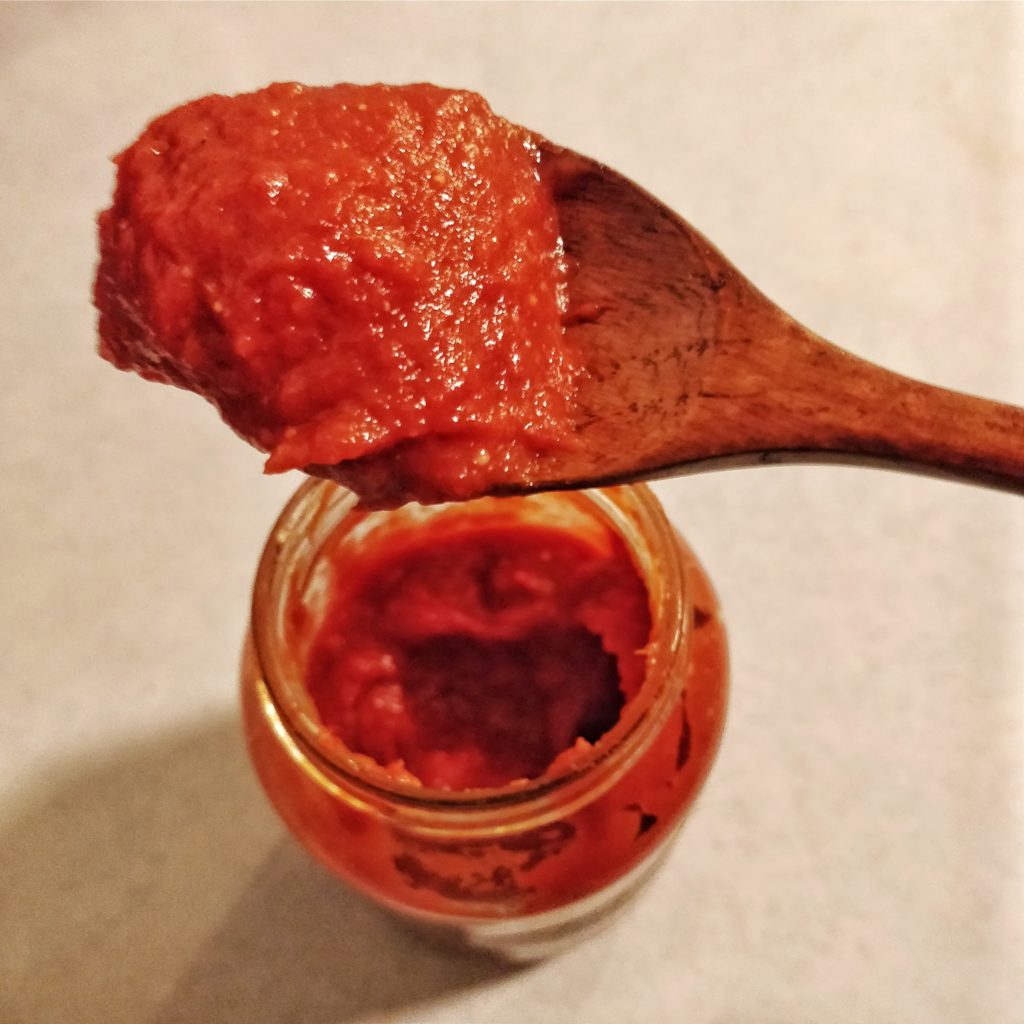
It does not feel like 115 days since I started this experiment, but it is! And this “umami ketchup” is a great example of how time can make things better. Finally, the sourness is reaching a crescendo of vinegariness that I was missing for something I was calling “ketchup” in my initial taste test. Cheers to a tastier 2021!
